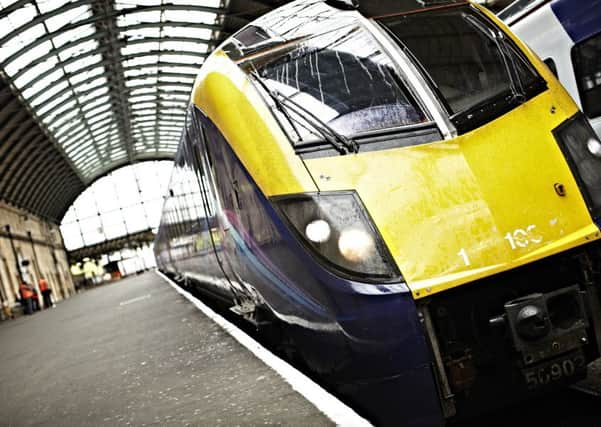Hull '˜can cope' with 1m visitors set to arrive for City of Culture


The Yorkshire city comes second from bottom in a UK poll, with one station per 258,995 people, after Leicester which has just one station serving almost 350,000 people.
But concerns that could cause capacity issues with a million visitors expected in Hull next year were dismissed yesterday.
Advertisement
Hide AdAdvertisement
Hide AdTransport campaigner Adam Fowler, who sits on a transport and logistics forum set up 18 months ago to plan for the City of Culture event, said there has already been “a lot of careful planning” which could see later buses and trains laid on for large-scale events.
He said: “Transport is key to the success of City of Culture –that’s something that has been learned from the London Olympics, that you must provide seamless transport. It might be rail, bus, cycling, it’s about having a multi-modal approach.
“From quite early on Chris Clay, from the City of Culture team, has been in constant discussion with Network Rail. There’s been a lot of careful planning – Chris has ensured there will be no digging up of the track next year, so no sudden closures for a week.
“There are particular pinch-points – the Sunday rail service is quite poor, the last train to Beverley is 8.15pm on a Sunday and the last train to Leeds is 9.30pm. We have been talking to train operating companies seeing whether on certain days of 2017 we might put on later trains.”
Advertisement
Hide AdAdvertisement
Hide AdFor the recent Place des Anges event, when 10,000 people came into the city centre, the Priory Park park and ride stayed open until nearly midnight and there were buses to some outlying areas at 1am.
“Because people had to pre-book a free ticket we were able to plot where demand was coming from,” said Mr Fowler.
“Hull already has a track record of catering for large-scale events –everything from Freedom Festival to the Manchester Utd game on Saturday night. The number coming to any one City of Culture event will be of a similar size and will be catered for under existing and enhanced transport provisions.”
Hull’s roads were recently named the sixth most congested in the country.
Advertisement
Hide AdAdvertisement
Hide AdCoun Martin Mancey, who has the transport portfolio on Hull Council, said: “If we have a transport problem, it’s commuters coming into the city, one person per car, clogging up the roads. But it’s really only a major problem in the morning and evening peaks –and it’s unlikely that (City of Culture) events will be starting at 9.30am.”
At the peak of the railway boom in the late 19th century, Leicester boasted four mainline stations. This number fell to just one in the 1960s. Areas served by a mixture of mainline and light rail services, such as Sunderland and Wolverhampton, were not included in the ranking.
Campaign for Better Transport’s Leicestershire chairman, Terry Kirby, said public transport in the area “could be a lot better”.
London was found to top a list of the highest concentration of stations, with one for just 1,460 residents. It was followed by the Highlands of Scotland (one per 3,968 people) and Gwynedd in Wales (one per 4,551 people). Outside of London, the built-up area with the most stations per population is Scarborough, where one station serves 7,707 people.